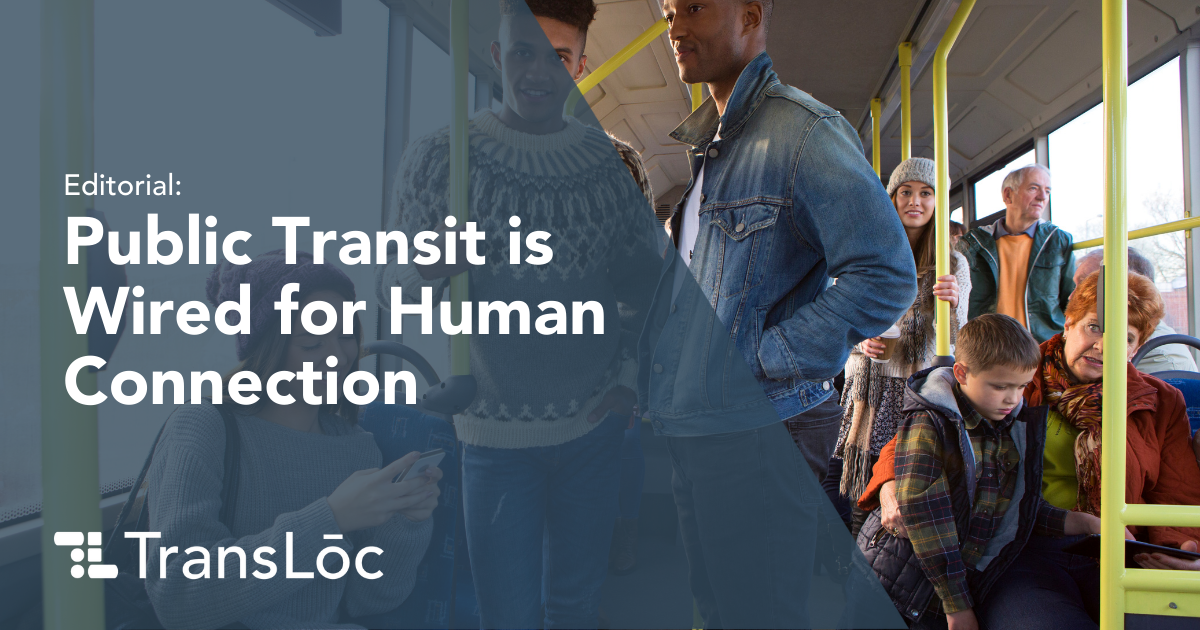
Hyde County, North Carolina is the prototype of coastal rural living. Take one step east over the county border and you’re in the Pamlico Sound, the largest lagoon along the East Coast. The 5,000 or so people who call Hyde County home aren’t ever in a rush. That’s just how life is on the shore.
I grew up in Hyde County, which means my closest exposure to public transportation as a kid was jumping into the back of my uncle’s pickup truck. When my cousins and I played too far out in the pasture to hear our parents yelling for us to come inside for dinner, we’d be scooped up in the flatbed and hauled to the dinner table before sundown.
Many years later, my career in transit has introduced me to transportation systems of all shapes and sizes. Today, I am a senior hardware specialist who helps transit providers operate their service by installing and maintaining various pieces of equipment — automated passenger counters (APCs), operator tablets, stuff like that.
Since the days of my “pickup mobility,” I’ve ridden some of the largest rail systems in our country including the New York subway, the T in Boston, and Washington D.C.’s Metro. These systems were created to serve riders in large volumes, which is understandable given how many people live in these cities. I’ve noticed that the riders’ relationship with these rail systems is fairly transactional, which isn’t a criticism. Riders board the train and then wait for their stop. When your average person thinks of riding public transportation, this scenario probably comes to mind.
For the longest time I thought the same until my job took me to a small city in the Upper Midwest.
At TransLoc, my day-to-day work revolves around public transit buses. Most of my hours are spent installing and configuring hardware products. I show operators how to power on their tablets or reset their APCs. I’ve spliced more wires than I care to remember.
It’s work that matters. However, it’s all technical all the time.
Little did I realize at the time that a tight-knit community was about to show me something different about the personal impact of public transportation.
One week I had to troubleshoot an issue the buses were having with a loss of onboard signage and sound. The transit agency had a modest fleet to serve a population of less than 100,000 people, so this was an issue that needed to be solved quickly. To get a better sense of what was wrong, I rode a few routes as a passenger to see if I could spot the problem. While I did find what I was looking for (poor cellular service on one route was preventing service announcements from reaching the bus), I found something else that left a mark on me: the genuine interactions amongst the drivers and riders.
On my first route, the driver happily greeted each of his passengers by name when they boarded the bus, as if they were longtime friends. On a different route, the driver asked one rider about another rider who he hadn’t seen in a while before learning that the absent rider had unfortunately passed away. Riders talked amongst themselves, too. I remember one exchange between an older woman and a man in a walking boot, who offered to help the woman with her laundry as she prepared for cold weather.
Some conversations were fun, some were serious, but they all had one thing in common: they were all real.
Interactions like these taught me that riding public transportation could be more than just getting from one place to another.
We often talk about the value of connecting people to the community at large through public transportation; places like schools, businesses, and healthcare facilities. What’s sometimes overlooked is the mini-community that drivers and riders naturally develop over time. The local public transit bus becomes a place for social support; a place to share life experiences or wisdom; and a place to feel a sense of belonging.
When I stepped off the bus, I felt grateful. Not because I had an answer to a pesky technical problem (although that was nice), but because my peers and I at TransLoc get to help people by solving mobility challenges.
Sure, we make it easier and safer to catch the bus, but I like to think we make it easier and safer for people to experience the joy of community.